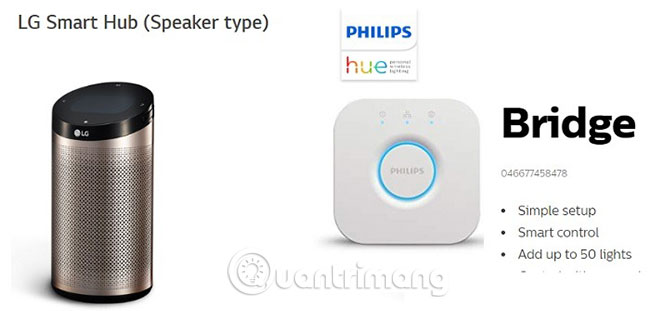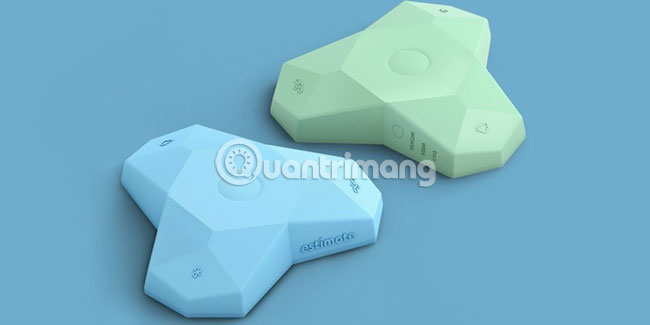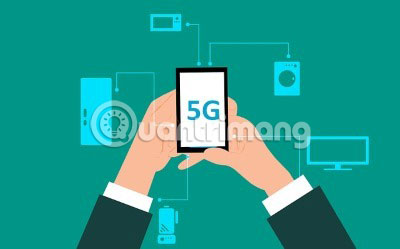How to choose the best connection protocol for IoT devices
Whether you're reading this site on your phone, tablet, PC, Mac or Chromebook, you can easily count existing Internet connection 'types'. WiFi and mobile data are the only options available.
In addition, you can only use one of these connection types to access the website on the same device. In fact, it may be a bit pointless to discuss such a topic.
So what about IoT?
However, in IoT, the question of choosing the right connection protocol can make the difference between the device. Unlike the Internet, IoT devices have more diverse connectivity protocols, including ZigBee, WiFi and Bluetooth.
There are also LoRaWAN and low-power consuming networks like SigFox, Bluetooth Low Energy (BLE), etc. In addition, smart device manufacturers are deliberately selecting a set of this protocol and ignoring the other protocols.
Let's take an example of a few famous IoT devices and the protocols they support.
- Nest thermostat : Running on WiFi 802.11 b / g / n, BLE and WiFi 802.15.4, more compatible with ZigBee, 6LoWPAN, MiWi and Thread.
- Nest Hello (video doorbell): Running on WiFi 802.11a / b / g / n / ac, BLE and WiFi 802.15.4.
- Apple HomeKit August SmartLock Pro : Running on WiFi and Bluetooth 4.0.
- Philips Hue light bulbs : ZigBee 3.0, backward compatible with ZigBee Light Link (ZLL). To connect to Amazon Alexa, Google Home or Apple HomeKit, you must purchase a separate device called Philips Hue Bridge.
- LG ThinQ smart refrigerator : WiFi, Bluetooth or ZigBee through LG's SmartThinQ hub.

Obviously, there are many protocols that exist for different devices, in different settings. IoT manufacturers decide to choose some connection protocol to match the market standard practices. Apart from Google Home or Apple HomeKit, there are many developing IoT platforms and trying to attract manufacturers.
Select connection protocol for IoT device?
As an end user, you only need to care about WiFi for your current IoT connection needs.
Currently, the guiding principle for most smart device manufacturers is to support a certain protocol while focusing on a common smart hub / bridge to connect to Alexa, Google Home and virtual assistants. other. Such hubs and bridges are designed to ensure backward and forward compatibility with any new protocol.

On the other hand, smart device manufacturers use their own set of criteria to determine the connection protocol for the utilities they produce.
Smart home utility : As in the previous examples, smart home utilities must always support WiFi, Bluetooth, BLE or ZigBee. Utilities can be built-in support or via hub / bridge.- Building automation : BACnet is an extremely popular network protocol for construction projects. Building automation projects also use Z-Wave and ZigBee.
- Personal devices : Some personal devices include a fitness tracker or smart shirt running on Bluetooth, BLE or NFC due to the low cost of implantation. In fact, these protocols will become extremely important in the future, with the aim of making any object smarter.
- Proximity sensor : Sophisticated IoT networks depend on Edge Computing or Fog Computing. There, proximity sensors must accurately identify themselves and Beacon technology is playing a very important role.

The importance of 5G
5G will play a very flexible role in developing IoT standards. From smart cars to drones or advanced brain surgery, the potential of 5G is limitless.
In the future, when 5G becomes cheaper, many IoT devices will begin to shift to support 5G. 5G really stands out and its applications will probably surpass all other network protocols.

There is no consensus on the choice of network connection protocol in IoT. This is because new protocols are constantly evolving with their own advantages.
Fortunately, as an end user of IoT devices, you don't have to worry much about whether a protocol will appear or disappear. Almost all device manufacturers support backward and forward compatibility through hubs or bridges.
What is your favorite IoT protocol? Let us know in the comments section below!
You should read it
- Amazon Sidewalk, the new wireless connectivity protocol that promises to help you know the location of anything
- What are IKE and IKEv2 VPN protocols?
- The new WPA3 WiFi standard was officially released
- Officially released TLS 1.3, promising a faster, safer Internet world
- Differentiate POP and IMAP
- What is Miracast Connect? On which device? Instructions on how to use Miracast
- How to set up and use PPPoE Internet connection on Windows 10
- How to fix Bluetooth Metered Connection error on Windows 10
May be interested
- Differentiate POP and IMAP
 if you've ever set up an email application, you probably know two terms pop and imap. but do you understand the difference between these two protocols and how the impact of each protocol on your email account?
if you've ever set up an email application, you probably know two terms pop and imap. but do you understand the difference between these two protocols and how the impact of each protocol on your email account? - How to transfer images from phone to TV using DLNA
 dlna is a protocol for connecting electronic devices via a wifi connection, such as connecting a phone to a television or connecting to the opposite.
dlna is a protocol for connecting electronic devices via a wifi connection, such as connecting a phone to a television or connecting to the opposite. - How to Share an Internet Connection
 if you want to share your internet connection with other devices in your home, you're probably wondering how to do it without setting up a complicated network. fortunately, windows and mac computers can easily share their internet connection with other devices. you can turn your computer into a wireless access point without using a router to connect to a wireless device.
if you want to share your internet connection with other devices in your home, you're probably wondering how to do it without setting up a complicated network. fortunately, windows and mac computers can easily share their internet connection with other devices. you can turn your computer into a wireless access point without using a router to connect to a wireless device. - How to set up and use PPPoE Internet connection on Windows 10
 many internet service providers provide customers with a point-to-point protocol over ethernet (pppoe) connection. this article will show you how to configure windows to connect to the internet via pppoe.
many internet service providers provide customers with a point-to-point protocol over ethernet (pppoe) connection. this article will show you how to configure windows to connect to the internet via pppoe. - Configure the VPN network connection in Windows XP
 if you want to create a vpn connection, you will have to use encryption to ensure that no one can access and prevent data from being lost while being transported over the internet. windows xp provides a level of security by using point-to-point tunneling (pptp) or layer two tunneling (l2tp) protocol.
if you want to create a vpn connection, you will have to use encryption to ensure that no one can access and prevent data from being lost while being transported over the internet. windows xp provides a level of security by using point-to-point tunneling (pptp) or layer two tunneling (l2tp) protocol. - How IP addresses work
 any device connected to a network such as a computer, tablet, camera, etc., will need a unique identifier for other devices to know how to access it. in the tcp / ip protocol, that identifier is called an internet protocol address or ip (internet protocol - ip) address.
any device connected to a network such as a computer, tablet, camera, etc., will need a unique identifier for other devices to know how to access it. in the tcp / ip protocol, that identifier is called an internet protocol address or ip (internet protocol - ip) address. - What is DLNA connection technology on computers, TVs, phones, etc.?
 dlna is a method of sharing multimedia files such as images, music and video between devices of telephone, television, computer player, music player, ... via an internet.
dlna is a method of sharing multimedia files such as images, music and video between devices of telephone, television, computer player, music player, ... via an internet. - Turn Windows 8 laptop into Wifi hotspot
 windows 7 has an internet connection sharing function via ad-hoc protocol. however, on windows 8 this function has been disabled, or more accurately hidden. microsoft does not 'lock' this feature completely. to enable network connection sharing via wireless waves, follow the steps below.
windows 7 has an internet connection sharing function via ad-hoc protocol. however, on windows 8 this function has been disabled, or more accurately hidden. microsoft does not 'lock' this feature completely. to enable network connection sharing via wireless waves, follow the steps below. - Firewire: Network connection 1394
 fireware / 1394 is a high-speed serial connection used to connect external storage devices and multimedia devices. but you can also run tcp / ip via fireware to network the two systems together.
fireware / 1394 is a high-speed serial connection used to connect external storage devices and multimedia devices. but you can also run tcp / ip via fireware to network the two systems together. - What is an IP address?
 ip address (internet protocol ip) is the number of formats for a network hardware, devices that use ip addresses to communicate with each other over an ip-based network like the internet.
ip address (internet protocol ip) is the number of formats for a network hardware, devices that use ip addresses to communicate with each other over an ip-based network like the internet.










 Why should never share WiFi passwords?
Why should never share WiFi passwords? Why do some websites start with WWW2?
Why do some websites start with WWW2? 5 best patch management and monitoring software
5 best patch management and monitoring software Install DNS server and Domain Controller in Windows Server 2003
Install DNS server and Domain Controller in Windows Server 2003 How to detect when your wifi network is stolen
How to detect when your wifi network is stolen Speed up Internet connection by changing DNS server
Speed up Internet connection by changing DNS server